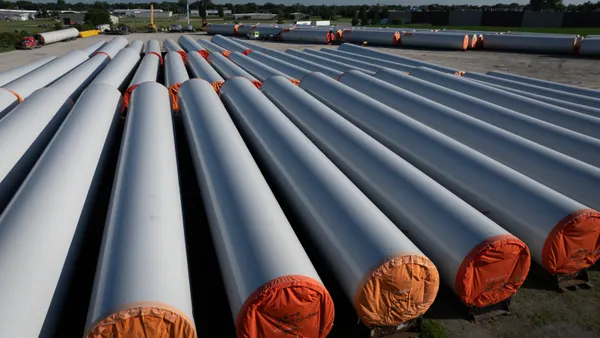Dive Brief:
-
Seattle and Los Angeles each peaked at 49 cranes in the air during the second quarter of 2019, forcing a tie for the position as the U.S. leader in commercial real estate consultancy Rider Levett Bucknall's (RLB) latest Crane Index report, according to the Puget Sound Business Journal.
-
Of the 13 North American metros that RLB tracks, Toronto had the most cranes in operation in Q2 2019 at 120, followed by Los Angeles and Seattle, then Calgary in Alberta, Canada (34); Portland, Oregon (30); Washington, D.C. (28); Chicago (27); New York City (27); San Francisco (23); Denver (18); Boston (14); Honolulu (4); and Phoenix (3).
-
This is the first time in more than three years Seattle has not outpaced all other U.S. cities in crane activity. The West Coast's crane count of 159, including Phoenix, was more than double the 69 in East Coast metros.
Dive Insight:
Last year at this time, RLB reported 65 cranes in Seattle, the highest number for the city since RLB began counting cranes in 2014. In the same report, Chicago's 40 cranes landed it in the No. 2 spot, ahead of Los Angeles, which had 36, and Portland, which had 30, the same as this year.
Recent deadly accidents and new federal regulations have put crane safety in the spotlight in recent months. New OSHA rules that went into effect in April are designed to minimize accidents by strengthening crane operators’ knowledge and training. The regulations, which revise the way that operators are trained, evaluated and certified, put the responsibility for operator readiness on the employer, according to an OSHA spokesperson.
New York City might see fewer cranes by this time next year if interest in luxury Manhattan condominiums continues to dip. The decrease is due to oversupply, according to The Wall Street Journal, new regulations that make owning a home in New York City even more expensive, and a decline in Chinese buyers as a result of relatively new capital controls imposed in China. Already the developer of at least one downtown condo building is in default with its lender and another group has handed over controlling interest in exchange for new investment.
In general, contractors are still optimistic about the U.S. construction market, although it's no surprise that some are looking for the end of the boom cycle that the industry has been experiencing since beginning its recovery from the Great Recession. Backlogs are still strong, although some have attributed a portion of that pipeline work to a skilled labor shortage that is forcing contractors to stretch out project schedules. Regardless, contractors are optimistic that at least for the next 12 months, their good fortunes will continue.
In the most recent Commercial Construction Index (CCI) report from USG Corp. and the U.S. Chamber of Commerce, a contractor survey revealed that more than 50% of respondents were confident that they would see opportunities for growth in the next year. They also predicted stable revenues.













